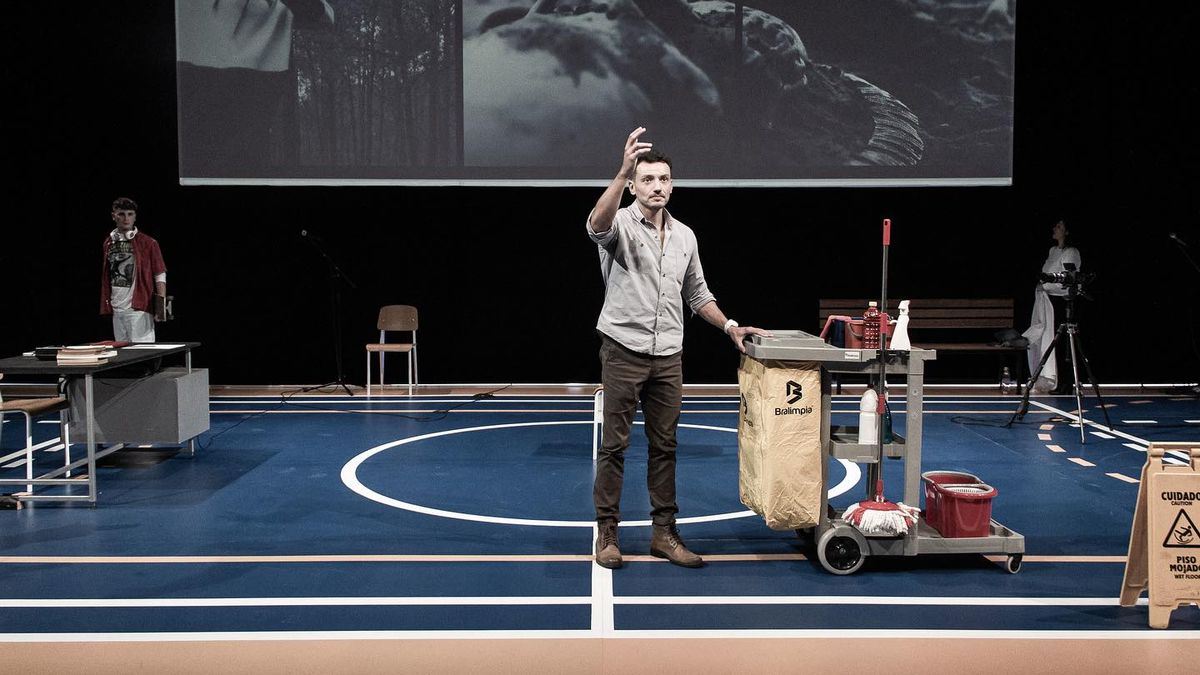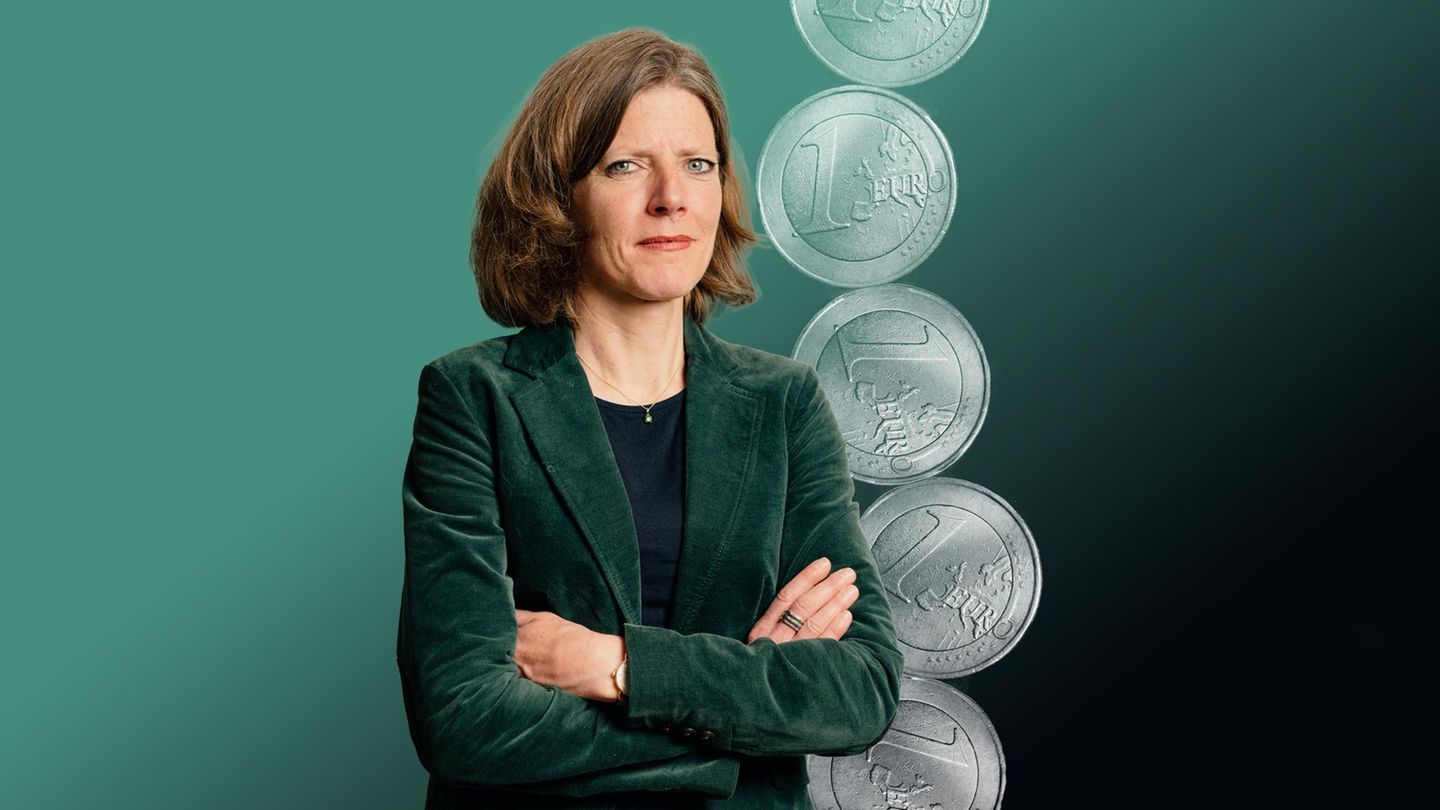Until Sunday it is represented in the Casacuberta room of the San Martín Theater an unusual show. This is “Tierra”, the work of Sergio Blanco, a Uruguayan playwright living in Paris, directed by a splendid quartet of actors from the neighboring country.who make a brief presentation at the CTBA as part of an international tour.
“Tierra” is a new attempt at dialogue with the dead, that desperate and vain attempt of humanity, since its origins, to recover a loved one, to evoke them in an almost in-person way, which is usually simultaneous with the purpose – no less vain – of unraveling the ultimate meaning of death, and of the life. The same question of Hamletwhich changes formats throughout history.
Blanco, in search of his mother’s “Rosebud” (to put it in Orson Welles’ terms in “Citizen Kane”).: Rosebud was that intimate secret that no one knew after her death, the sleigh of her childhood), of that mystery that allows him to recover it, understand it, decipher it or, simply, talk with it once again, give it a kiss or a caress (a tiring way of saying “resign to your death,” to put it in Borges’s terms.) resorts to the genre that distinguishes him from other playwrights who cultivate the same current: autofiction, the same one that, in literature, the recently deceased also used Paul Auster.
This format inverts the terms of the usual question: just as fiction authors are asked how much is autobiographical in their characters, with autofiction we want to know how much is invented in them.. But ultimately, and except for biographers, that is what matters the least: what is played on stage, and here there is a lot of what is played (a verb that in English, “play”, has a broader meaning: the work even takes place on a school basketball court), is what is truly valuable.
But this work is not limited to autofiction, but rather stages the very act of creating drama.. The actors, in the Prologue (the play then has three acts and an Epilogue) explain to the audience how what we are seeing now was created, and each of them tells how he was summoned by White to intervene, and why they were selected. This, like autobiographical facts, may or may not be true, but it doesn’t matter.
Thus, according to what was pointed out before, In addition to autofiction, “Earth” is also part of the so-called “self-awareness” of the artistic fact, a long-standing concept here updated.. In the 70s, times of structuralism and neo-Marxism in the theory of the arts, the term “self-consciousness” was established.: This is the name given to that work of art that swept away the “bourgeois” and conventional structure, and to do so it had to suppress even the deception of fiction and exhibit its own production mechanisms (“those means of production that the capitalist alienates from the worker,” as the seventies French theorists taught at the Practical School of Higher Studies in Paris after ’68). That is “self-awareness”, also a tribute to the principles of Bertolt Brecht: in theater, a work is aware of itself, and how it was created is shown at the same time as it is represented.
This is what it does “Land”: the spectator witnesses a work that is being made while explaining how and why it was made, and each of its characters “plays” various roles at the same time: those of themselves, those of the work and, in a third unfolding plane, the ones the author dreams of. What is called a work “in the abyss”.
Attention: this may sound a bit cumbersome and only limited to university students, but “Land” It is enjoyed even by the spectator least interested in the resources of the theatrical event. Because in this, and nothing else, good theater has consisted since the times of Aeschylus (author several times invoked in the work): that no one is left out. Authentic inclusion.
The plot
“Land” is starring Sebastian Serantes, who plays the alter ego of the author and director. His goal, as said before, is to recover his mother, who was a professor of classical languages in life and passionate about the culture of antiquity; to reveal unknown aspects of her personality and her life, and to do so she uses three characters: an older woman, an orderly at the school where her mother taught classes, and whom she taught to read (Andrea Davidovics); a young man (Tomas Pineiro), former student, who murdered his brother for an obscure family reason and who served his sentence in prison, where his mother White I brought him books, and a girl (Soledad Frugone), also a former student, who is searching for her missing father. This last character is the one who has a double role (actually, a third role, since all the actors also play themselves), and it is to play the ophthalmologist who, in a nightmare of the author, tells him that he will go blind. .
The dynamic staging has a structure that incorporates and surpasses the usual rear projection of images, since it also uses two functional cameras. that “film” the characters: they give a part of the testimonies that the author wants to record, and their faces are thus amplified next to the projected images. It could be a device and the close-ups of the actors are recorded, but that is also part of the permanent game between reality and fiction.
“Land” is a co-production between Marea, Sergio Blanco’s company, in co-production with the National Directorate of Culture of Uruguay, the National Dramatic Center of Spain, the Buenos Aires Theater Complex and the Gabriela Mistral Center of Chile. I wish more shows of this hierarchy would be seen in these unfortunate moments for cultural life in our country.
“Earth”, by Sergio Blanco. Direction: Sergio Blanco. Performers: Andrea Davidovics, Sebastián Serantes, Soledad Frugone, Tomás Piñeiro. Buenos Aires Theater Complex, San Martín Theater, Casacuberta Room. Until May 5.
Source: Ambito
I am an author and journalist who has worked in the entertainment industry for over a decade. I currently work as a news editor at a major news website, and my focus is on covering the latest trends in entertainment. I also write occasional pieces for other outlets, and have authored two books about the entertainment industry.




